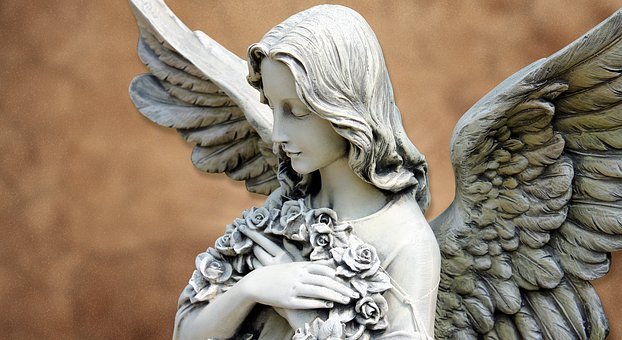Different Religions and Beliefs # 4- [Daily Compilation]

The purpose of this post is to offer a global knowledge of all the beliefs and religions that exist in the world, in order that the reader has an open view, not dangerously closed to a single idea, belief or religion.
I believe that the different religions and beliefs should be known and studied minimally; they should expose themselves, comment, share their evidence and discuss their reasons without stirring up their dogmatisms.
We have the dual duty of transmitting and teaching all our fellow citizens the existence of all the beliefs and religions that have developed in our civilization. Only that knowledge will make us more sensitive and respectful to others. Since a unique and absolute belief, without a vision of other beliefs makes us be arrogant and disparaging towards other ideas.
This is the Fourth of a post series where I will compile in a brief and simple way the different beliefs and religions that exist in the world.
Albigenses
Christian heretical movement that developed during the eighteenth century in southern France, also known as the Albigensian heresy, named for being the main center of the city of Albi.
The Albigenses, who should not be confused with the movement of the Cathars, professed a kind of Manichean doctrine that claimed that the world was evil and the church corrupt. His background is born in Pedro de Bruys, Aquitanian prophet, who preached against the cult of images and the abuse of the church. Although Bruys was burned at the stake, Pedro Valdo de Lyon followed the movement.
The Albigensians maintained that the church should recover its primitive simplicity, the priests should abandon their wealth and popes and prelates should live with the simplicity of the apostles.
They also attacked the existence of purgatory and the truth of some dogmas, not recognizing the authority of the pope and the church. Neither did they believe in miracles and the resurrection of the flesh, but if in the transmigration of souls, they did not accept baptism at birth, and as for marriage, only the consent of the contracting parties was enough. In 1233 the Dominicans were charged with putting an end to this heresy.
Amidism
Amidism is a form of Buddhism that began in China and then passed to Japan, its belief is based on devotion to Buddha. Everything seems to indicate that this devotion, known as Amitabha, came to China from India in the fourth century through the adherents of the Great Vehicle (Mahayana).
In China, it gave rise to the Pure Land School (Ts'íng-T'ou), the most pietistic and least philosophical of all the Chinese Buddhic schools.
This school distinguishes between the salvation that is obtained by one's own effort and that which is received by the grace and power of others. This school continually reminded its faithful of the importance of morality, family and civic virtues.
The school of Ts'ing-T'ou became the Japanese Jodo, with Honen being the father of Amidism in Japan. Shiran, disciple of Honen, founded in 1224 the sect "true pure land" the Jodo Shin Shu, whose beliefs indicate that sin can only be saved by faith, the more the man is spiritually destitute, the more possibilities he has of saving himself, then, being incapable of the least personal effort, less resistance will oppose the saving force of Amida.

Apocalypse
The belief of the Apocalypse is based on the book of the New Testament written by Saint John, a prophetic work in which a revelation of Jesus Christ appears about what is going to happen. A book loaded with symbols in which the facts of the Last Judgment and the disappearance of the world are determined, with the arrival of the Antichrist.
At different times in the history of humanity, especially at the entrance of the new millennia, believers emerged who announced the apocalyptic events, such as the total destruction of humanity, and the arrival of the Apocalypse.
Apart from the Apocalypse of Saint John, there are apocryphal books, the Apocalypse of Ezra, Syriac of Baruch, Elijah, Zephaniah, Abraham, Adam, Peter, Paul, and Thomas.
Beelzebub
Demonic character in which some people believe. In the New Testament, he appears as "prince of the demons" the equivalent of Satan. For some scholars, it is linked to the figure of Baalzebul "lord of the high place".
Bogomils
The Bogomils formed an important Christian movement in the twelfth century that spread through Thrace, Macedonia, Bulgaria, and Bosnia. The Bogomils defended a dualistic doctrine, where the rebellion of one of the children of God created second heaven from which the temptation to Eve.
The Bogomils did not admit more than the Psalms and the prophetic books of the Old Testament, interpreting in a particular way the content of the New Testament. They practiced a spiritual baptism, rejected the cult of the cross.

Calvin
The theologian and reformer John Calvin (1509-1564), was born in Noyón, France, inspired by the Scriptures he began to preach the reformatory doctrines, which provoked persecution against him. He was expelled from Geneva and arrested in Vienna by Catholic authorities, sentenced to the stake, but managed to escape, however on the way to Italy he was subjected to a new trial and burned to death. His fundamental work was "Institutio Christiansen religionis" (Basilea, 1536).
Calvin lent a great cause to Protestantism since he systematized the doctrine and organized the ecclesiastical discipline of Protestantism.
See you in the next post. Thank you for reading.
All images come from pixabay.com
